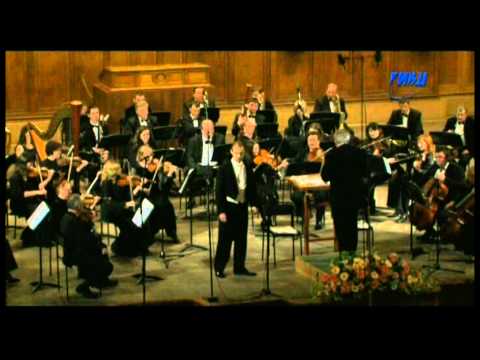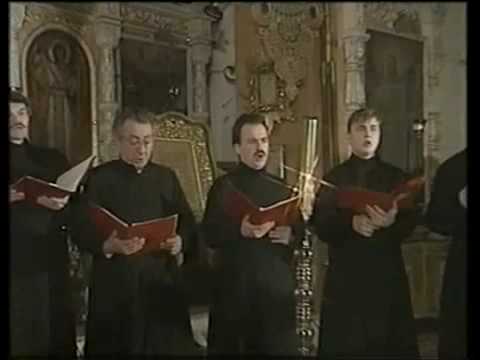5.10: Bass
- Page ID
- 72382
The bass is the lowest male voice and has the lowest tessitura of all the voices. Cultural influence and individual variation create a wide variation in range and quality of bass singers. Parts for basses have included notes as low as the B-flat two octaves and a tone below middle C (B♭1), for example in Gustav Mahler’s Symphony No. 2 and the Rachmaninov Vespers. Many basso profondos have trouble reaching those notes, and the use of them in works by Slavic composers has led to the colloquial term “Russian bass” for an exceptionally deep-ranged basso profondo who can easily sing those notes. Many British composers such as Benjamin Britten have written parts for bass (such as the first movement of his choral work Rejoice in the Lamb) that center far higher than the bass tessitura implied by the clef.
Listen: Bass
This video shows Maxim Kuzmin-Karavaev singing a piece from Gioachino Rossini’s opera The Barber of Seville.
Basses are often divided into different subcategories based on range, vocal color or timbre, the weight of the voice, and dexterity of the voice. Basses are often broken down into six subcategories: basso profondo, basso buffo, bel canto bass, basso cantante, dramatic bass, and bass-baritone.
- Basso profondo—Basso profondo (lyric low bass) is the lowest bass voice type. According to J. B. Steane in Voices, Singers & Critics, the basso profondo voice “derives from a method of tone-production that eliminates the more Italian quick vibrato. In its place is a kind of tonal solidity, a wall-like front, which may nevertheless prove susceptible to the other kind of vibrato, the slow beat or dreaded wobble.” Dramatic basso profondo – English equivalent: dramatic low bass. Dramatic basso profondo is a powerful basso profondo voice.
Listen: Basso Profondo
Listen to basso profondo Mikhail Zlatopolsky sing with the Russian Choir.
- Basso buffo/bel canto/lyric buffo—Buffo, literally “funny”, basses are lyrical roles that demand from their practitioners a solid coloratura technique, a capacity for patter singing and ripe tonal qualities if they are to be brought off to maximum effect. They are usually the blustering antagonist of the hero/heroine or the comic-relief fool in bel canto operas. Equivalent terms are Schwerer Spielbass (German) and dramatic buffo (English).
- Basso cantante/lyric high bass/lyric bass-baritone—Basso cantante means “singing bass.” Basso cantante is a higher, more lyrical voice. It is produced using a more Italianate vocal production, and possesses a faster vibrato, than its closest Germanic/Anglo-Saxon equivalent, the bass-baritone.
In a SATB four-part mixed chorus, the bass is the lowest vocal range, below the soprano, alto, and tenor. Voices are subdivided into first bass and second bass, no distinction being made between bass and baritone voices, in contrast to the three-fold (tenor–baritone–bass) categorization of solo voices. The exception is in arrangements for male choir (TTBB) and barbershop quartets (TLBB), which sometimes label the lowest two parts baritone and bass.
Contributors and Attributions
- Bass (Voice type). Provided by: Wikipedia. Located at: https://en.Wikipedia.org/wiki/Voice_type. License: CC BY-SA: Attribution-ShareAlike
- Maxim Kuzmin-Karavaev(bass)-Aria of Don Basilio(G.Rossini-Il barbiere di Siviglia). Authored by: u041au0430u043du0430u043b u043fu043eu043bu044cu0437u043eu0432u0430u0442u0435u043bu044f helgaopera. Located at: https://youtu.be/XGG33jIZ7YM?t=1s. License: All Rights Reserved. License Terms: Standard YouTube License



